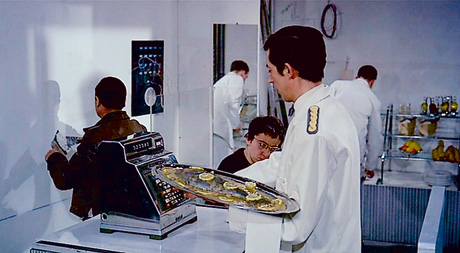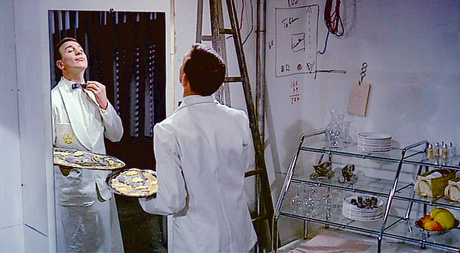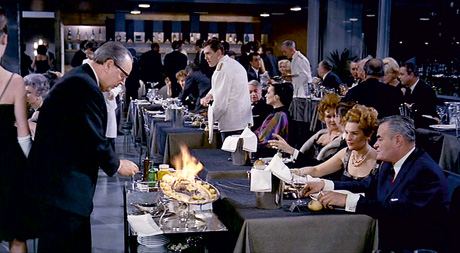Plaice Names
A real mouthful
Allen S. Weiss
How do we get from a plaice to a place? This is an ancient tale, so we would do well to begin with etymology. Webster’s Third New International Dictionary teaches that plaice has numerous derivations: plaice or plais in Middle English, plaïs or plaïz in Old French, platensis in Late Latin, platys in Greek, all somehow alluding to flatness, broadness, place, and specifically indicating the European flounder (Pleuronectes platessa), also known as the summer flounder, and the fluke in England.
Further research reveals that flatfish refers to the order Heterosomata, which includes the halibuts, flounders, turbots, and soles. Reference to sole, in turn, reinforces our initial etymology, as the name of these flatfish of the family Soleidae, including the famed European foodfish Solea solea, is derived from the Latin, Middle French, and Middle English solea or sandal. Harrap’s New Standard Dictionary translates plaice by two different names: plie and carrelet. We learn, thanks to Le Petit Robert, that plie (whose first instance in Old French occurs in 1530 as plaïs, derived from twelfth-century Low Latin) is not only a false homonym for pli (fold), but in fact its antonym, as this fish is actually flat—as Old English, Middle English, and Old High German imply—and not at all folded. We are given a further clue, as the dictionary refers plie to carrelet.
Here the plot thickens, since carrelet is derived as early as 1360 from quarlet, carrel, carreau, and is thus not only a flatfish, but a squarefish, a fish of “quadrangular form.” But by 1694, we are confronted with a great irony, or perhaps sarcasm, as the carrelet at that moment also comes to designate a square fishing net, such that the carrelet may be used to catch the carrelet. A further set of definitions expresses the richness and rectitude of the term carrelet, which also signifies a square ruler, whence its relation to the noun carrelage (floor tile) and the verb carreler (to tile or to draw squares or to cobble shoes), all derived from the noun and adjective carré, square.
We are moving towards a greater coherence, so we might recapitulate using the classic dictionary Littré: the plie is a flatfish related to the limande and also known as carrelet; there also exists a related species, the plie rude, commonly known as the flétan, but obviously a different species. Of particular interest is the illustrative citation culled from the Ménagier, a fourteenth-century cookbook: “Plais sont doulces à applanier à la main, et lymandes au contraire.” (“Plaice is soft to the touch, as opposed to the limande.”) In turn, the limande, a “poisson de mer fort plat” (“a very flat sea fish”—the adjective very is here rather striking), is designated as being more or less similar to the carrelet, and, unusual in the Littré, the same quotation from the Ménagier is offered. But two additional meanings of carrelet are of interest: a large and flat ruler (carpenter’s or mason’s straightedge) and a flat piece of wood used for boat repairs (graving piece). Furthermore, the fact that the term faire la limande means “a slap in the face” is not without interest.
At this point we probably have enough information to answer our initial question. The plaice is a square flatfish; the place, plaza, piazza is the town square, eternally traversed by sandal-shod soles. Such a flat, square, grid-like space is the utopia of the surveyor, cartographer, geometer, urbanist, and occasionally (Cartesian) philosopher. The place is an ideal plaice, perfect in its quadrature, its flatness, its levelness, its smoothness. Inversely, the plaice is a camouflaged, dissimulated place, perpetually hiding its true physical qualities. But why is it, we may ask, that in the Scandinavian countries plaice is so highly valued as a food-fish, while in France it is rarely seen on menus or in recipes? Here we must delve into the culinary unconscious. As a camouflaged fish, plaice is fundamentally indistinguishable from its place. This fact is accentuated in the French definitions where, as we will remember from the Ménagier citation, plie and limande are differentiated by touch, not sight. For the Gallic chef, the plie and the limande are invisible, and as such are rarely served. To the contrary, in the Scandinavian countries, the plaice is named according to its red spots—Rödspätta (Swedish), Rødspette (Norwegian), Rødspætte (Danish)—and it is as if these aquatic targets call out to be caught and cooked. Unlike the plaice, which doubles as its place, the redspot distinguishes itself from its place. We might conclude by claiming that genius loci in fact means, “the sole of the plaice.” Yet in that case, we would also need to consider the pollack or coalfish, known in French as the lieu—French for “place.” But that would be a whole other story.






Allen S. Weiss has recently published his Autobiographie dans un chou farci (Mercure de France, 2006) and Varieties of Audio Mimesis (Errant Bodies Press, 2008). He is currently working on a new book, The Metaphysics of Crumbs.
Spotted an error? Email us at corrections at cabinetmagazine dot org.
If you’ve enjoyed the free articles that we offer on our site, please consider subscribing to our nonprofit magazine. You get twelve online issues and unlimited access to all our archives.